When it comes to restorative dental procedures, patients often face a variety of options depending on the extent of damage or decay to their teeth. One such option that is increasingly popular for moderate to severe tooth damage is the dental onlay. Dental onlays offer a durable and aesthetically pleasing solution that bridges the gap between traditional fillings and dental crowns. In this article, we will explore what a dental onlay is, how the procedure works, how onlays differ from inlays and fillings, and why they are beneficial dental treatments.

What Is a Dental Onlay?
A dental onlay is a type of indirect restoration used to repair teeth that have suffered extensive damage or decay. Onlays are often referred to as “partial crowns” because they cover more of the tooth’s surface than a traditional filling but not as much as a full crown. Dental onlays are custom-made in a dental laboratory and are designed to fit precisely over the damaged area of a tooth, restoring its function and appearance.
Onlays are typically made from materials such as porcelain, composite resin, or gold. Porcelain is particularly popular due to its natural appearance and ability to match the color of the surrounding teeth. The primary purpose of a dental onlay is to restore the tooth’s strength, prevent further decay, and provide long-term durability.
The Dental Onlay Procedure
The procedure for getting a dental onlay typically involves two visits to Family Dental Group. Here’s what you can expect during the process:
- Initial Examination and Preparation: During the first visit, Dr. Dominic Branz & Dr. Lindsey Gross at Family Dental Group will conduct a thorough examination of your tooth to determine the extent of the damage. If a dental onlay is deemed the best treatment option, Dr. Dominic Branz & Dr. Lindsey Gross will begin by numbing the area around the affected tooth with local anesthesia. The decayed or damaged portions of the tooth will be removed, leaving behind a healthy structure. Once the tooth is prepared, Dr. Dominic Branz & Dr. Lindsey Gross will take an impression of the tooth, which will be used to create the custom onlay. In some cases, a digital scan of the tooth may be taken instead of a traditional impression.
- Temporary Restoration: After the impression or scan is complete, Dr. Dominic Branz & Dr. Lindsey Gross will place a temporary onlay or filling over the prepared tooth to protect it while the permanent onlay is being fabricated in the dental lab. This temporary restoration will allow you to chew and speak normally until your next appointment.
- Fabrication of the Onlay: The impression or digital scan is sent to a dental laboratory, where skilled technicians will craft your custom onlay. This process typically takes about one to two weeks. The onlay is designed to fit precisely over your tooth, ensuring a snug and secure fit.
- Placement of the Onlay: During your second visit to Family Dental Group, Dr. Dominic Branz & Dr. Lindsey Gross will remove the temporary restoration and clean the prepared tooth. The custom dental onlay will then be placed onto the tooth to check for proper fit and bite alignment. Once everything is confirmed, the onlay will be permanently bonded to the tooth using a strong dental adhesive. Dr. Dominic Branz & Dr. Lindsey Gross will then polish the onlay to ensure a smooth and natural appearance.
How Do Dental Onlays Differ from Inlays and Fillings?
Understanding the differences between dental onlays, inlays, and fillings is essential for making informed decisions about your dental care. Here’s how these restorative options compare:
Coverage and Extent of Restoration:
- Fillings: Traditional fillings are used to restore small areas of tooth decay or damage. They are applied directly to the cavity and harden inside the tooth. Fillings typically cover only the decayed area and do not extend over the cusps (the pointed parts) of the tooth.
- Inlays: Dental inlays are similar to fillings but are used for more extensive damage that does not involve the cusps of the tooth. Inlays are custom-made in a dental lab and are placed within the tooth, fitting snugly into the cavity.
- Onlays: Dental onlays, often called partial crowns, are used when the damage is more extensive and affects one or more of the cusps. Onlays cover the damaged area as well as one or more cusps, providing more coverage and protection than inlays and fillings.
Strength and Durability:
- Fillings: While fillings are effective for small cavities, they may not be as durable as inlays or onlays, especially when used to restore teeth subjected to heavy chewing forces.
- Inlays: Inlays provide greater strength than traditional fillings due to their precise fit and the materials used. They are a durable option for moderate tooth damage.
- Onlays: Onlays offer the most strength and durability of the three options. Because they cover a larger portion of the tooth, onlays can withstand significant chewing forces and protect the tooth from further damage.
Aesthetic Considerations:
- Fillings: Composite resin fillings can be color-matched to the tooth, providing a natural appearance. However, amalgam (silver) fillings are more noticeable and may not blend as seamlessly with the surrounding teeth.
- Inlays: Inlays, especially those made from porcelain or composite resin, are highly aesthetic and can be matched to the tooth’s natural color.
- Onlays: Like inlays, onlays can be made from tooth-colored materials, offering a natural and aesthetically pleasing result. They are often indistinguishable from the natural tooth structure.
Longevity:
- Fillings: The lifespan of a filling depends on the material used and the location of the filling in the mouth. Composite fillings typically last 5 to 7 years, while amalgam fillings can last 10 to 15 years.
- Inlays: Dental inlays can last anywhere from 10 to 20 years with proper care, making them a long-lasting solution for tooth restoration.
- Onlays: Dental onlays are the most durable of the three options and can last 20 years or more with proper oral hygiene and regular dental check-ups.

Why Do I Need a Dental Onlay?
If Dr. Dominic Branz & Dr. Lindsey Gross recommends a dental onlay, it is likely because your tooth has suffered extensive damage that cannot be effectively treated with a filling or inlay. Here are some common reasons why you might need a dental onlay:
Extensive Decay or Damage: When a tooth has significant decay or a large cavity that affects the cusps, a dental onlay is often the best treatment option. Onlays provide the necessary coverage and strength to restore the tooth and prevent further damage.
Fractured or Cracked Teeth: If a tooth is fractured or cracked but still has enough healthy structure remaining, a dental onlay can be used to restore the tooth’s function and appearance. Onlays can effectively protect the weakened tooth and prevent the crack from spreading.
Replacement of Old Restorations: Over time, old fillings or inlays may wear down, crack, or fail. A dental onlay can be used to replace these old restorations, providing a more durable and long-lasting solution.
Preservation of Tooth Structure: Unlike full crowns, which require the removal of a significant amount of healthy tooth structure, dental onlays allow for a more conservative approach. Only the damaged or decayed portion of the tooth is removed, preserving more of the natural tooth.
Benefits of Dental Onlays
Dental onlays offer several benefits that make them a valuable option for restorative dental treatment:
Strength and Durability: Dental onlays are known for their strength and ability to withstand heavy chewing forces. They provide excellent protection for the tooth and can significantly extend its lifespan.
Aesthetic Appeal: Onlays made from porcelain or composite resin are highly aesthetic and can be matched to the color of the natural tooth. This ensures that the restoration blends seamlessly with the surrounding teeth, making it virtually invisible.
Conservative Treatment: Onlays allow for a more conservative approach to tooth restoration compared to full crowns. By preserving more of the natural tooth structure, onlays help maintain the integrity of the tooth.
Custom Fit: Because dental onlays are custom-made, they provide a precise fit that ensures comfort and functionality. The custom fit also helps to seal the tooth more effectively, reducing the risk of future decay.
Long-Lasting Results: With proper care, dental onlays can last for many years, providing a long-term solution for tooth restoration. This makes them a cost-effective investment in your oral health.
Conclusion
Dental onlays are a versatile and durable option for restoring damaged teeth. They offer several advantages over traditional fillings and inlays, including greater strength, better aesthetics, and longer-lasting results. Dr. Dominic Branz & Dr. Lindsey Gross will evaluate your oral health and recommend the best treatment options to meet your needs, ensuring you achieve a healthy, beautiful smile.

